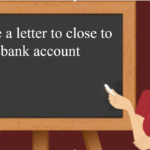Parts of speech are the basic categories of words in a language. They help us understand the role that a word plays in a sentence. Here’s a brief tutorial on the main parts of speech:
- Noun:
- There are two main types of nouns:
- Common Nouns: Refer to general, everyday things. Examples: dog, house, city.
- Proper Nouns: Refer to specific, individual things and are capitalized. Examples: Rover, Paris, Coca-Cola.
- There are two main types of nouns:
- Pronoun:
- Pronouns replace nouns to avoid repetition. They can be classified into various types:
- Personal Pronouns: Refer to specific persons or things. Examples: he, she, it, they.
- Reflexive Pronouns: End in -self or -selves and reflect the action back to the subject. Examples: myself, herself, themselves.
- Demonstrative Pronouns: Point to specific things. Examples: this, that, these, those.
- Pronouns replace nouns to avoid repetition. They can be classified into various types:
- Verb:
- Verbs can be categorized into different types based on their functions:
- Action Verbs: Describe a physical or mental action. Examples: run, think, eat.
- Linking Verbs: Connect the subject to a subject complement (noun, adjective, or pronoun). Examples: is, am, are, seem.
- Helping Verbs (Auxiliary Verbs): Assist the main verb in forming a complete thought. Examples: can, will, should.
- Verbs can be categorized into different types based on their functions:
- Adjective:
- Adjectives add details to nouns and pronouns. They answer questions like “What kind?” or “How many?”:
- Examples: happy, blue, three, beautiful.
- Examples: happy, blue, three, beautiful.
- Adjectives add details to nouns and pronouns. They answer questions like “What kind?” or “How many?”:
- Adverb:
- Adverbs modify verbs, adjectives, or other adverbs. They answer questions like “How?” or “When?”:
- Examples: quickly (modifying a verb), very (modifying an adjective), often (modifying another adverb).
- Examples: quickly (modifying a verb), very (modifying an adjective), often (modifying another adverb).
- Adverbs modify verbs, adjectives, or other adverbs. They answer questions like “How?” or “When?”:
- Preposition:
- Prepositions show relationships between words. Common prepositions include in, on, under, above, beside.
- Prepositions show relationships between words. Common prepositions include in, on, under, above, beside.
- Conjunction:
- Conjunctions connect words, phrases, or clauses:
- Coordinating Conjunctions: Join similar elements. Examples: and, but, or.
- Subordinating Conjunctions: Introduce dependent clauses. Examples: because, although, if.
- Conjunctions connect words, phrases, or clauses:
- Interjection:
- Interjections express strong emotions and are often followed by exclamation marks:
- Examples: Wow! Oh no! Hey!
- Interjections express strong emotions and are often followed by exclamation marks:
Understanding the functions of each part of speech helps in constructing grammatically correct and coherent sentences. It’s important to note that some words can function as different parts of speech depending on context. If you have specific sentences or examples you’d like to discuss, feel free to provide them for further clarification!





